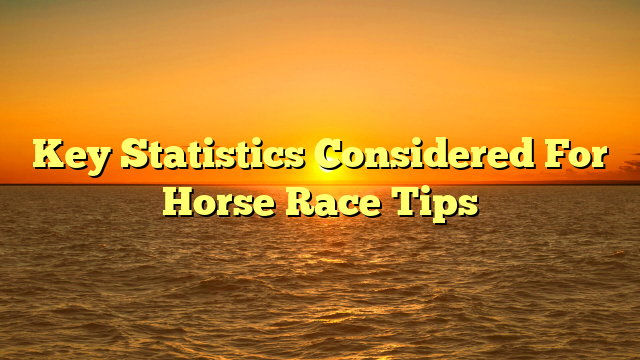Key Statistics Considered For Horse Race Tips
You’ll need to be aware of several things when making horse race tips. You’ll have to take into consideration the past performances, Brisnet Speed, and Beyer Speed Figure. It is also important to know the jockey/trainer combination. Although the list of factors is extensive, it doesn’t cover all the elements. These factors are based upon many thousand races and do not apply to any particular race track, surface, or type.
Beyer Speed Figure
The Beyer Speed Figures are an essential statistic for horse race betting. They are used to differentiate legitimate from pretenders. They consider a number of factors, like track surface depth and speed that make them superior to raw final timings. The Beyer Speed Figure is one of the most important metrics utilized in horse betting, and is an essential element of determining who will win the race.
Horse speed figures can be used to determine the likelihood of a horse to win the race. The most successful contenders are those that have the highest Beyer speed figure. This means they are more likely of winning than horses with lower figures. These figures are calculated using complicated mathematical formulae. Horses are sent to various tracks and surfaces to get an accurate reading.
Brisnet Speed and Pace Ratings
It is crucial to take into consideration the horse’s speed and rating when handicapping a horse race. Brisnet offers four different speed ratings. They are called E1, E2, Late Pace (LP) and Speed (SPD). E1 speed ratings concentrate on the speed of horses during the initial stages of a race. They evaluate speed over the first two or four furlongs of a route race.
One horse whose speed and pace ratings are thought of in horse race tips is Cyberknife. The 4-year-old mare has impressed in both of her two races in the last two weeks. She won an allowance at Fair Grounds and then scored a two-and-a-half-length victory in the Arkansas Derby (G1) over less-than-stablemates. Even though she did not face the most challenging field, she did manage to score career-best Brisnet Speed and Pace ratings over her two previous starts.
Past performance
Past performance is a crucial aspect to consider when predicting horse race results. Past performance can be used to predict the course a horse is likely to take in a specific race. There are many ways to view past performance. One method is to consider the total duration the horse has participated in the race. Form can also be used to describe past performances.
You can also use the past performance to predict the horse’s future performance. For instance If a horse has won five races in consecutive days and has the potential to win the next race within five. It also can tell us about the age of a horse, showing whether it’s at peak performance or not.
Jockey / trainer combination
Selecting a trainer and jockey combination is among the most important aspects of choosing a horse that will win. The combination is essential to the success of a horse, especially if they’re experienced and have proven results. However, there are a few tips to remember when making a choice. The trainer has more control over a horse’s long-term development than jockeys do. The trainer is the one who decides on the schedule and duration of a horse’s training.
A combination of jockeys and trainers is always to be considered when evaluating a horse for betting. For example, a hot trainer and a class dropper might be a great combination. It is important to understand that both of these factors can be beneficial to horses, and it is best to choose a combination that combines the elements.
Distance of the race
Horse racing is measured in furlongs. One furlong is equal to one-eighth an inch. Sprints are races that are less than one mile. A race with a distance of more than one mile is referred to as a ROUTE.
Horse Racing Tips that spans distance can be a physical, mental and emotional battle among elite competitors. In addition to the physical distance, a horse’s response to stress can affect overall performance. This makes it critical to be aware of the horse’s physical speed as well as mental fortitude.
